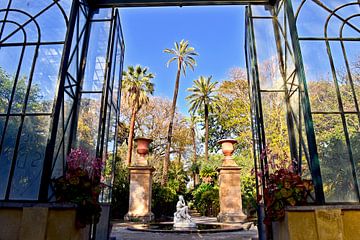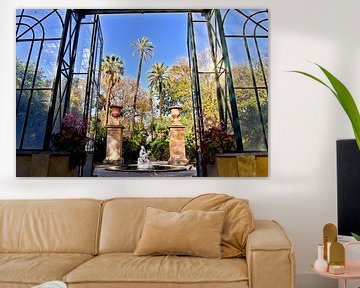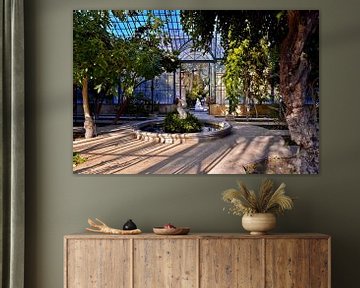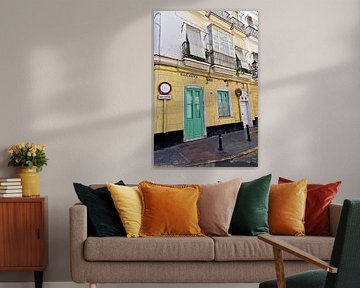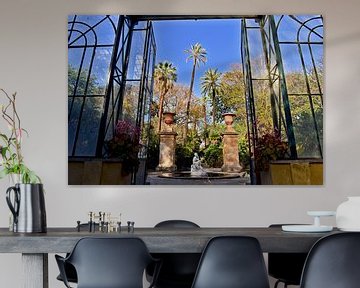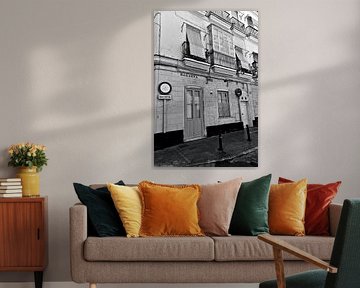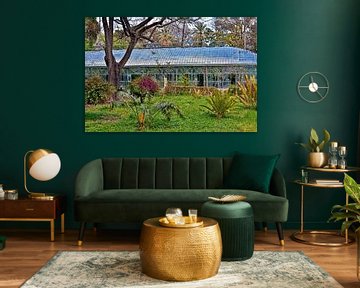-
De magnifiques palmiers dans le jardin botanique de Palerme
136,- ArtFrame™, 75x50 cm
-
Serre ensoleillée du jardin botanique de Palerme
136,- ArtFrame™, 75x50 cm
-
Célèbre station de chemin de fer de style Art nouveau à Giardini-Naxos - monochrome
136,- ArtFrame™, 75x50 cm
-
Célèbre gare ferroviaire de style Art nouveau à Giardini-Naxos
136,- ArtFrame™, 75x50 cm
-
Peinture ornementale avec motifs d'oiseaux dans le style Art nouveau sicilien
136,- ArtFrame™, 50x75 cm
-
Peinture ornementale avec des motifs d'animaux dans le style Art déco sicilien
133,- ArtFrame™, 60x60 cm
-
Façades colorées de maisons dans le vieux centre de Cadix
136,- ArtFrame™, 50x75 cm
-
Célèbre décor de cinéma à la gare de Taormina-Giardini Naxos
136,- ArtFrame™, 75x50 cm
-
Serre du jardin botanique de Palerme en Sicile
136,- ArtFrame™, 75x50 cm
-
Des palmiers magiques dans le jardin botanique de Palerme
136,- ArtFrame™, 75x50 cm
-
Peinture ornementale avec des animaux fabuleux dans le style Art nouveau sicilien
136,- ArtFrame™, 50x75 cm
-
Peinture ornementale avec de fabuleux oiseaux dans le style Art nouveau sicilien
136,- ArtFrame™, 50x75 cm
-
Façade de maison andalouse dans le vieux centre de Cadix
136,- ArtFrame™, 50x75 cm
-
Jardin botanique de Palerme
136,- ArtFrame™, 75x50 cm
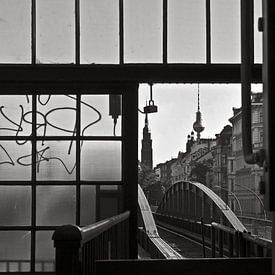 BERLIN167 oeuvres
BERLIN167 oeuvres WINTER33 oeuvres
WINTER33 oeuvres INDIAN SUMMER84 oeuvres
INDIAN SUMMER84 oeuvres OSTKÜSTE SIZILIEN91 oeuvres
OSTKÜSTE SIZILIEN91 oeuvres BLACK and WHITE190 oeuvres
BLACK and WHITE190 oeuvres ANDALUSIEN71 oeuvres
ANDALUSIEN71 oeuvres ART NOUVEAU14 oeuvres
ART NOUVEAU14 oeuvres Land de Brandebourg103 oeuvres
Land de Brandebourg103 oeuvres LOST PLACES142 oeuvres
LOST PLACES142 oeuvres VIETNAM27 oeuvres
VIETNAM27 oeuvres STILL LIFE28 oeuvres
STILL LIFE28 oeuvres NATURE403 oeuvres
NATURE403 oeuvres BLUMEN / PFLANZEN103 oeuvres
BLUMEN / PFLANZEN103 oeuvres FRANCE16 oeuvres
FRANCE16 oeuvres SPAIN81 oeuvres
SPAIN81 oeuvres SARDINIA6 oeuvres
SARDINIA6 oeuvres Sicile180 oeuvres
Sicile180 oeuvres SOMMER der FARBEN129 oeuvres
SOMMER der FARBEN129 oeuvres Baltic Sea34 oeuvres
Baltic Sea34 oeuvres DENMARK32 oeuvres
DENMARK32 oeuvres NETHERLANDS19 oeuvres
NETHERLANDS19 oeuvres JAPANDI-KUNST31 oeuvres
JAPANDI-KUNST31 oeuvres ANIMALS42 oeuvres
ANIMALS42 oeuvres POETRY / QUOTES8 oeuvres
POETRY / QUOTES8 oeuvres VOGUE7 oeuvres
VOGUE7 oeuvres HAMBOURG7 oeuvres
HAMBOURG7 oeuvres MEMORIAL34 oeuvres
MEMORIAL34 oeuvres SURREALISM47 oeuvres
SURREALISM47 oeuvres Photographie analogique41 oeuvres
Photographie analogique41 oeuvres ITALY94 oeuvres
ITALY94 oeuvres POLOGNE6 oeuvres
POLOGNE6 oeuvres MOCHA MOUSSE6 oeuvres
MOCHA MOUSSE6 oeuvres POTSDAM2 oeuvres
POTSDAM2 oeuvres
